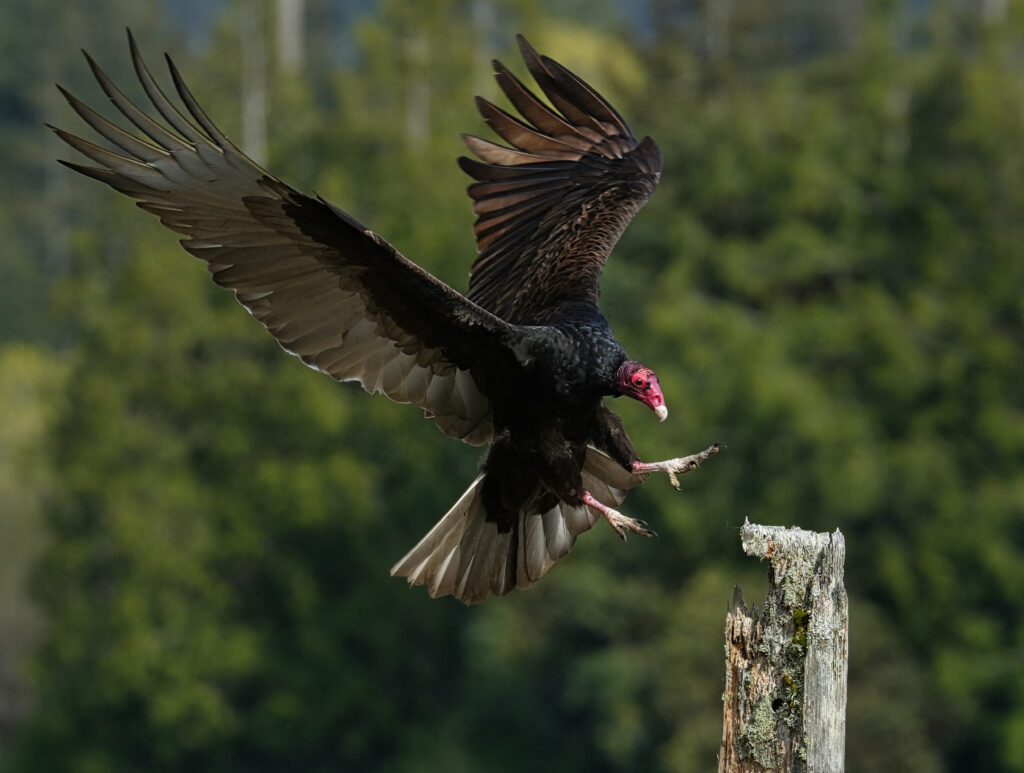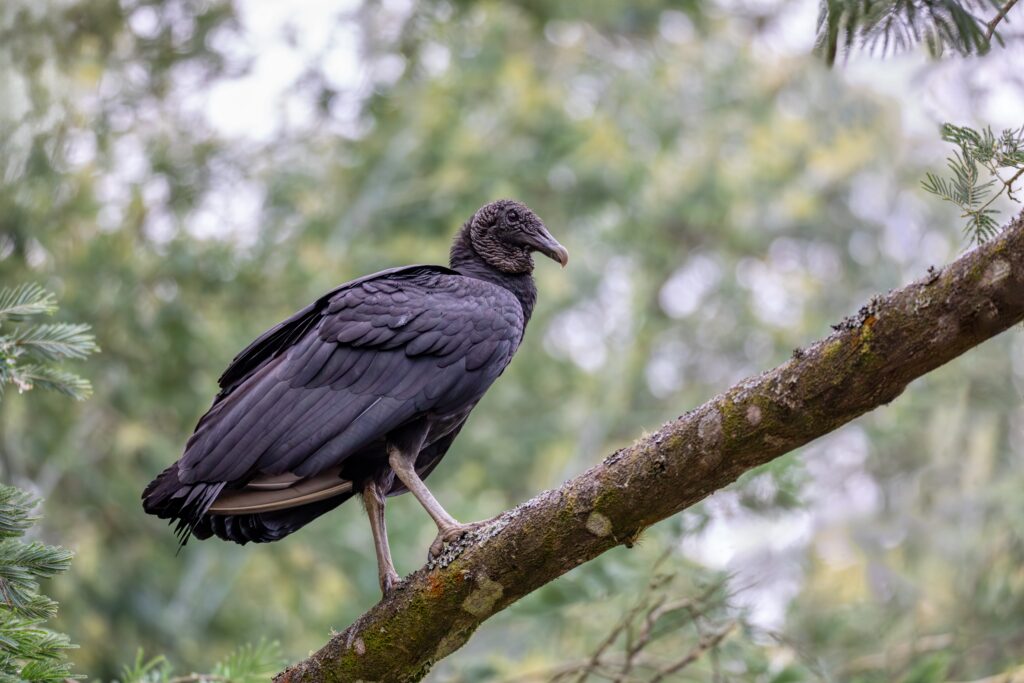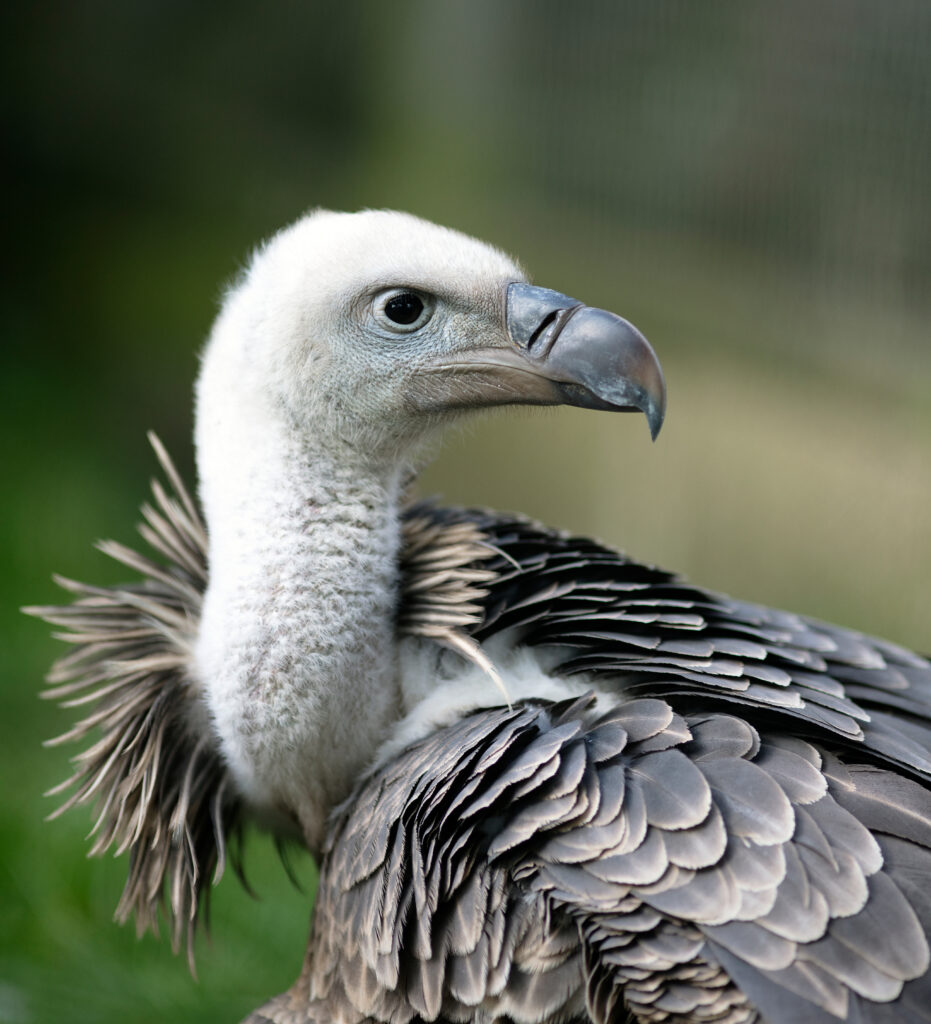PROTECT YOUR DNA WITH QUANTUM TECHNOLOGY
Orgo-Life the new way to the future Advertising by AdpathwayCelebrate Nature’s Cleanup Crew
The first Saturday of September is International Vulture Awareness Day (IVAD), a time to celebrate some of the most misunderstood but ecologically vital birds on the planet. Far from being a bad omen, these highly sociable and intelligent creatures are essential to the health of our environment.
First started in 2009 by the Hawk Conservancy Trust and the Birds of Prey Programme of the Endangered Wildlife Trust, IVAD aims to raise awareness about the critical role vultures play as “keystone species” and the threats they face globally.
 Turkey Vulture Landing – by Brian Rundle
Turkey Vulture Landing – by Brian RundleCanada’s Vultures: A Story of Adaptation
In Canada, we primarily see two vulture species whose populations are changing.
- The Turkey Vulture (Cathartes aura) : This is a common species found across the country. Since the 1970s, its population has seen a dramatic and sustained increase, and it has expanded its range northward. It is remarkably intelligent, with problem-solving abilities to rival a parrot or a human toddler.
- The Black Vulture (Coragyps atratus): They have only recently established a Canadian population. While its numbers are still too small for direct national monitoring, data shows a significant increase in the lower Great Lakes region. Intelligent, curious, and highly social, the Black Vulture uses a keen sense of smell to find the carrion it eats.
Although these two species are just a small fraction of vultures across the world, we must not forget that vultures in Canada can become vulnerable at any time.
 Black Vulture
Black VultureWhy Are Their Numbers Increasing? A Complex Picture
The rise in vulture numbers in Canada isn’t a simple conservation success story. These adaptable birds have benefited from significant environmental shifts, some of which are concerning. The increase is likely linked to factors such as:
- The reduction of environmental contaminants like organochlorines and lead
- A warming climate allowing for northward expansion
- An increase in deer populations
- More available carrion resulting from our expanding road networks
While these changes have helped local vulture populations thrive, they highlight a much more complex and changing landscape.
The Unsung Heroes of the Ecosystem
Vultures are nature’s essential cleanup crew, and their role is irreplaceable.
- Disease Prevention: By consuming carcasses, they help prevent the spread of bacteria and viruses. In their absence, other scavenger populations can increase, potentially bringing diseases from wild carcasses into human cities.
- Global Diversity: There are 23 vulture species worldwide, divided into New World vultures (like those in the Americas) and Old World vultures (found in Africa, Asia, and Europe).
- Amazing Feats: The Rüppell’s griffon vulture is believed to be the world’s highest-flying bird, with confirmed sightings at over 10,000 meters (35,000 feet)!
 Rüppell’s griffon vulture (critically endangered)
Rüppell’s griffon vulture (critically endangered)A Global Crisis Demands Local Awareness
Despite local population increases, we must remember that vultures are in trouble globally. As of 2018, it’s estimated that, on average, vultures are at a greater risk of extinction than birds in general. The primary threat they all face is the presence of toxins, poisons, and pesticides in the carrion they consume. This is why even Canada’s vultures could become vulnerable at any time.
Learn more about IVAD and their partners here: https://www.vultureday.org/
Read more about the threats facing vulture populations internationally here:
https://www.birdlife.org/worldwide/vulture-crisis


 1 day ago
14
1 day ago
14





















 English (US) ·
English (US) ·  French (CA) ·
French (CA) ·